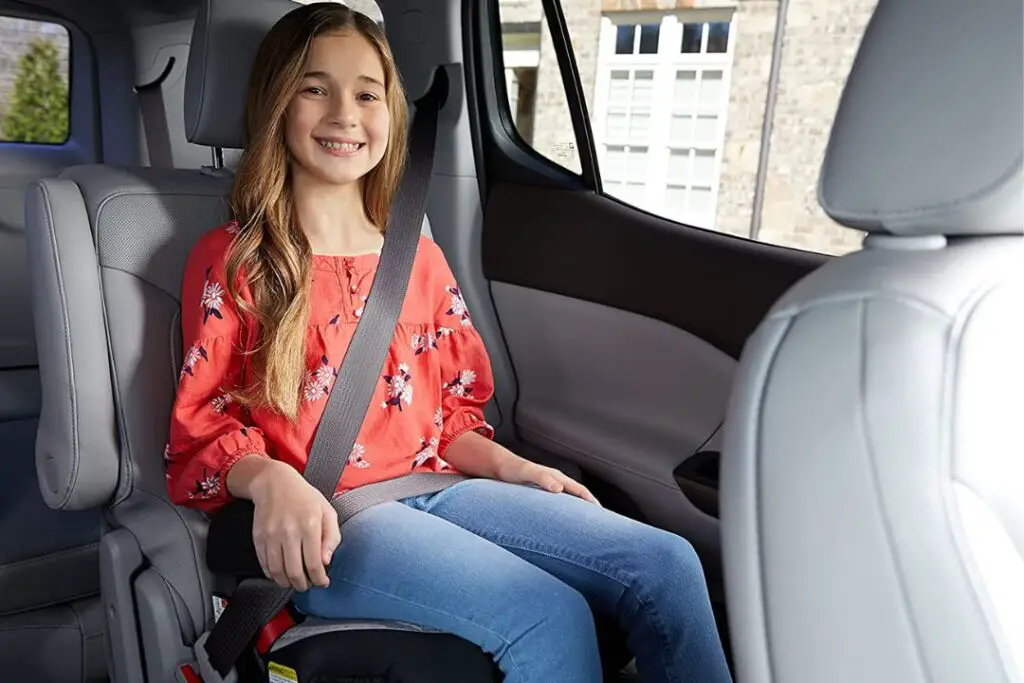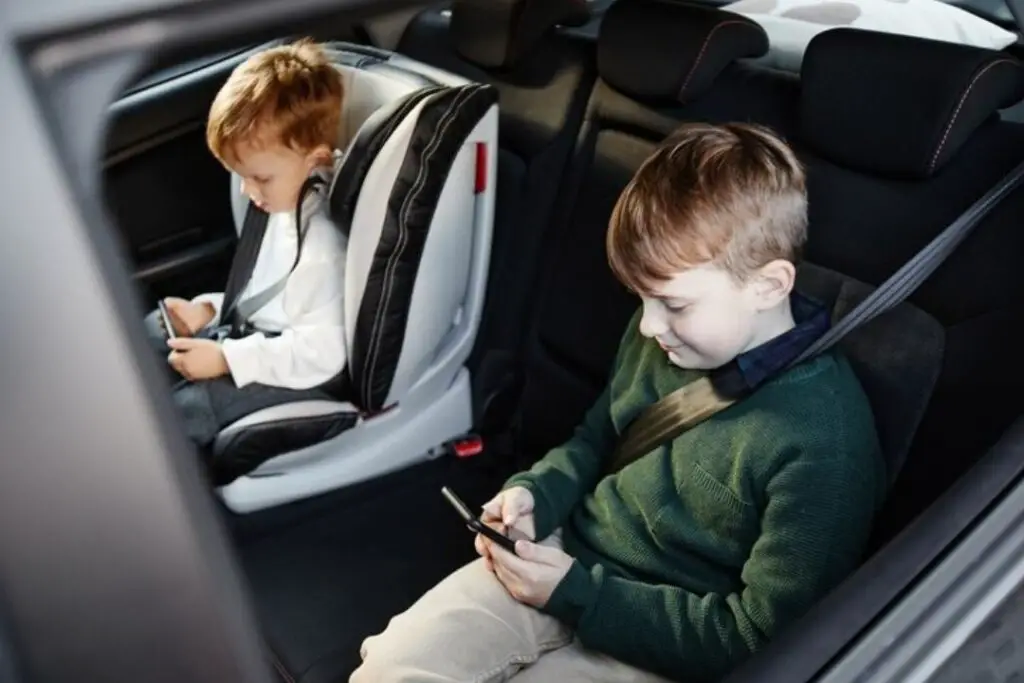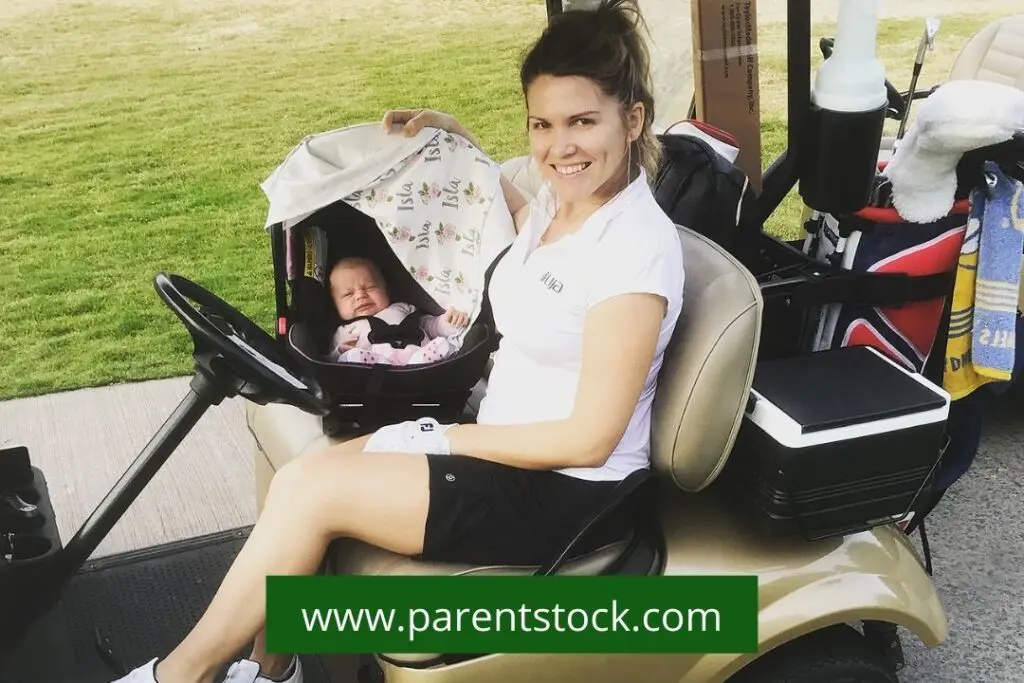Automobile accidents continue to be a primary cause of childhood injury and death, thus car seat safety is of the utmost importance for parents. Parents should be aware of when their children are ready to switch from a regular car seat to a booster seat. How to convert Graco car seat to booster is a question, every parent wants to know.
Here, we’ll show you how to convert a Graco car seat to booster seat. We’ll talk about how booster seats vary from regular car seats, how to convert a regular car seat to a booster, and other safety considerations while using a booster.
By the conclusion of this piece, you will be fully equipped to make the switch to a booster seat for your kid.
What age are booster seats for?
Children who have outgrown their forward-facing, harnessed car seat but are still too short to safely utilise the vehicle’s seat belt on their own should use a booster seat. To what extent a kid needs a booster seat depends on his or her size and weight, so there’s no hard and fast rule about when he or she should start using one.
Between the ages of 4 and 8, most kids are at the perfect height for a booster seat. But, before installing a booster seat in your car, make sure your youngster meets the manufacturer’s specifications for height and weight.
Booster seats lessen the likelihood of harm in the case of a collision by elevating the youngster so that the vehicle’s seat belt fits properly over his or her lap and shoulders. To guarantee your child’s safety, you should always follow the booster seat manufacturer’s guidelines while installing and using the seat.
Read More: Best Narrowest Infant Car Seats
What Is a High Back Booster Position?
A high-back booster seat has a raised backrest. It works with the car’s lap and shoulder belt. The high backrest supports the child’s head and neck. This helps to adjust the seat belt. It is for kids who have outgrown their forward-facing car seat with a harness.
But they are still too small for an adult seat belt. The high-back booster seat can reduce the risk of serious injury in an accident. The seat belt must be positioned correctly over the child’s shoulder and lap.
There are several features available on high-back booster seats to ensure the child’s comfort and convenience, such as adjustable headrests, cushioned armrests, and cup holders. These are simple to attach using the car’s seat belt and remove or modify as the youngster gets bigger.
Understanding Car Seats and Boosters
How to convert Graco car seat to booster: First you will learn what is car seat and booster seats and how to convert.
Differences between car seats and boosters:
Typically, car seats used for infants and toddlers up to around 4 years old since they are too little to properly utilise a seat belt. The youngster kept safely in the seat by means of a harness. Yet, older children who have outgrown a car seat but are still too little to utilise a seat belt alone may benefit from using a booster seat. Children who use booster seats have their lap and shoulder belts properly positioned over their bodies.
When to transition from a car seat to a booster:
Children should use a car seat with a harness until they outgrow it due to age, height, or weight restrictions, as recommended by the American Academy of Pediatrics.
A youngster should switch to a booster seat whenever they outgrow their infant or convertible car seat.
It usually happens around the age of four, however it might be earlier or later depending on the child’s build.
Types of boosters available:
Booster seats may either have a high back or no back at all. In cars without headrests or with very low seat backs, it advised to use a booster seat with a high back.
The child’s head and neck supported, and the seat belt may placed properly over the child’s lap and shoulder with the help of a belt guide.
It advised to use a booster seat without a back in cars that have headrests and high seat backs. They lift the youngster so that the seat belt rests properly over the shoulder and lap. It’s crucial to get a booster seat that fits your car and your youngster.
How do I know when to change car seats?
In order to keep your kid safe when travelling by car, you should be aware of when it is time to switch car seats. These are some broad recommendations about when to switch out car seats:
Check the height and weight limits:
The manufacturer’s instructions for a car seat will often include information on the maximum allowable height and weight for the seat. If your kid reaches the height or weight restrictions, you should no longer use the car seat.
Check the age and development of your child:
Changing car seats should be done in accordance with your child’s developmental stage, rather than their age, since the latter is not always a reliable predictor of when to do so. If your kid has outgrown their infant car seat, for instance, you may want to upgrade to a convertible seat that can be used both rear- and forward-facing.
Check the condition of the car seat:
Worn or damaged vehicle seats may not provide enough protection in the case of an accident. Check your car seat often for damage, such as frayed straps, broken buckles, or cracks in the plastic shell.
Check for safety recalls:
Manufacturers of child safety seats may sometimes issue product recalls for the sake of consumer safety. Car seat recalls are something you should keep an eye on, and if you find one, you should follow the manufacturer’s instructions for fixing it.
Changing your kid’s car seat is an important decision that should only be made after consulting the manufacturer’s guidelines or a qualified child passenger safety technician.
Preparation for Conversion
Check the car seat manual: It is crucial to read the car seat handbook completely before trying to convert your Graco car seat to a booster. Converting the car seat to a booster seat is a simple process that is explained in depth in the handbook.
Ensure that the car seat is suitable for conversion: Only few child safety seats can be used as boosters. If you have a Graco car seat, you should see whether it can be upgraded to a booster seat by consulting the owner’s handbook.
Gather necessary tools: In order to convert your Graco car seat to a booster, you need need a screwdriver and pliers. Check that you have everything you need to do the conversion before you get started.
Steps for Conversion
Remove the harness system:
The harness must be removed from a Graco car seat before it may be used as a booster seat. Do this in accordance with your car seat’s handbook. In most cases, you’ll need to unbuckle the chest clip and loosen the harness straps. After that, disconnect the harness from the rear of the car seat and pull it out.
Adjust the headrest:
Take off the child’s strap and then set the headrest to his or her height. For proper head and neck support, the headrest must be at or above the child’s shoulders.
Install the booster seat:
Putting in the booster seat is the next step. Connect the booster’s seat belt to the car seat’s seat belt. To make sure the booster seat fitted correctly, read and follow the directions in the included car seat handbook.
Adjust the seat belt:
Install the booster seat, then modify the vehicle’s seat belt to suit your child’s size. The child’s lap and shoulder completely covered by the seat belt without being excessively tight or too loose. The precise placement of the seat belt may ensured by following the booster’s belt guidance.
Keep in mind that the procedure may vary somewhat depending on whether or not your Graco car seat has an integrated booster mode. If you need detailed instructions on how to go from car seat to booster mode, see your handbook.
How do you adjust the headrest on an Infasecure booster seat?
Depending on the type of Infasecure booster seat, the procedure for adjusting the headrest may be different. General instructions for adjusting the headrest of an Infasecure booster seat are as follows.
Locate the headrest adjustment lever: Most Infasecure booster seats include a lever at the top of the headrest that can pull up to modify the height of the headrest.
Adjust the headrest: The headrest may raised or lowered by pulling up on the lever located at the back of the chair. The tops of the child’s ears, below the top of the headrest, and the headrest adjusted so that the child’s head centred in the headrest.
Check the fit: Verify that the child’s head and neck properly supported by the headrest and that the vehicle’s seat belt, still properly positioned over the child’s shoulder and lap after making any necessary adjustments.
If you want to make sure your kid is safe in their Infasecure booster seat, you should follow the manufacturer’s guidelines for adjusting the headrest.
Safety Tips for Using a Booster Seat
Proper installation:
Make sure the booster seat placed correctly in your car. Use the vehicle’s seat belt to fasten the booster seat in place as directed by the user handbook. The booster seat must be secured so that it does not slide about.
Proper seat belt use:
Instruct your kid on the proper usage of the safety belt. A youngster should wear a shoulder belt over his or her chest and a lap belt across his or her upper thighs. It’s dangerous for a youngster to wear a seat belt under their arm or behind their back.
Proper fit for the child:
Check the booster seat’s fit before using it. Both the lap and shoulder belts worn properly, with the former fitting securely over the child’s lap and the latter over his or her shoulder and not over the child’s neck or arm. The child’s hips will raise by the booster seat and their back should be against the car seat for the seat belt to fit properly.
Tips for keeping children safe:
Ensure your youngster is sitting up straight in the booster seat and not leaning forward. Booster seats recommended for children and used whenever possible, especially on short vehicle rides. Never put a youngster less than 13 years old in the front seat of a car equipped with a passenger airbag.
Booster seats registered with the manufacturer to receive recall and safety update notifications.
Conclusion
If you already own a Graco car seat, you may get more use out of it by converting it to a booster seat. To guarantee a safe and proper conversion, read the car seat handbook in full and adhere to the manufacturer’s recommendations.
Keep in mind that older children who have outgrown a car seat but are still too little to utilise a seat belt alone should use a booster seat. The best way to safeguard your kid in the case of an accident is to use a booster seat correctly.
Keep up with the latest safety recalls and updates by registering your booster seat with the manufacturer. Your kid can ride safely in the vehicle with the help of a Graco car seat and a booster seat if you take the time to learn how to make the transition.




